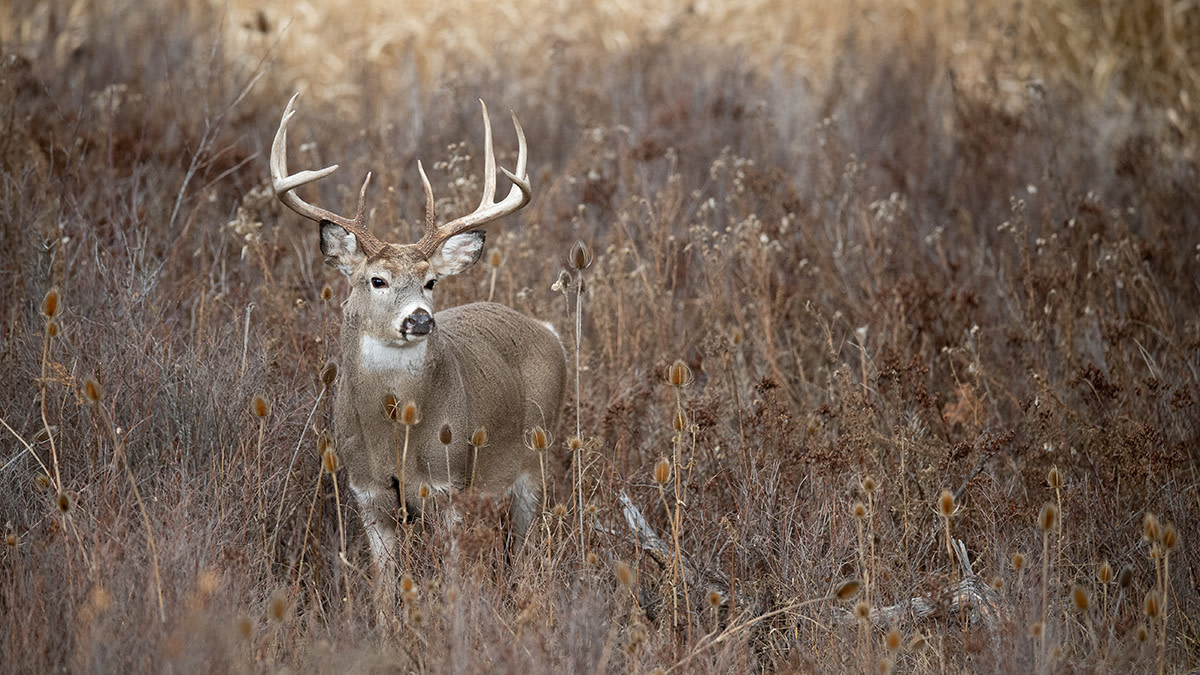
Pressure may be the most difficult challenge a whitetail hunter faces each fall. Stand selection, access, adjacent landowners, shifty wind, it all adds up. Hunters blame "being skunked" on a variety of excuses: moon cycles, unseasonably warm temperatures, barometric pressure, and the various phases of the rut. But despite what your cousin's neighbor said, human presence is the leading culprit for a shift in the whitetail woods—outside of breeding season.
Permanent Stands are a Double-Edged Sword
Live by the food plot, die by the food plot is my motto when pressure rises to the top at our farm. Stand rotation is the best way to offset excess human presence. You simply cannot hunt the same spot or general area over and over. Deer will catch on very quickly and acclimate. It’s what they do best as a prey species.
Ideally, you should let stands sit for a week between hunts. Clint McCoy details a GPS collar study on hunter pressure in the National Deer Association article How Fast Can a Stand “Recover” From Hunting Pressure.
“It’s easy to get in a routine and sit the same stand time after time, especially if it has produced in the past or if you have trail-camera photos of a big buck in the area,” McCoy said. “It’s easy to think, ‘if I keep hunting this stand, I’m bound to cross paths with that buck at some point.’ The results of our research suggest just the opposite—the more that stand is hunted, the less likely deer are to pass within range of it.”
Like everything in life, there are exceptions to the rules, and every year big bucks are harvested in areas with heavy hunting pressure.
“Our findings suggest that to improve your chances of encountering deer, avoid making yourself predictable,” McCoy said. “By hunting one of your favorite spots too often, you may be unintentionally affecting deer movement and behavior patterns in the area, leading to reduced chances of success.”
Be Fluid Throughout the Season
It's easy to hunt the same general areas consistently, and it's convenient to blame everything else on your lack of deer sightings. The mythical "October Lull" is just that: an idea that deer are shifting for any other reason besides hunter pressure. This is when it's time to adjust your strategy. Hunt between permanent stands and be a rover. Hunt over fresh signs and understand where deer feed throughout the season because it constantly varies.
Being a mobile drifter throughout the season is a fundamental practice to master deer travel patterns as they change based on hunter pressure. I've never come across a chart that estimates the percentage of hunters out and about each month, but I would bet October through mid-November is peak time. Therefore, this should be when deer dramatically alter their movement to avoid camouflaged killers. It’s another reason why all-day sits work and hunting tight bedding sites can produce heavy antlered results.
Don’t become fixated on scrapes or tree rubs. Search for fresh tracks. Analyze food sources to identify freshly snipped plants and cattle trough-style tracks under oaks. Over the fall, does are raising fawns and gearing up for breeding season with the goal of gestation. Food and nutrition are crucial elements for the day-to-day life of a mature antlerless whitetail.
This seems obvious, right? Well, as the first females in your local herd hit heat cycles, bucks will jump right into rut events. They stop eating as much and can cut up to 25% of their body weight. At that point, bucks only care about one thing: continuing the species. Remember, prior to the rut, bucks consume 6 to 8% of their body weight daily. That is quite the transition, and it’s why I promote my next point.
Find Does, You’ll Find Bucks
During the rut you should hunt does—because bucks are hunting them! Find does and you’ll find bucks cruising through. Whether it’s an oak-saturated bottomland, dense bedding thicket, or lush food plot, locate does and know where and how they feed throughout the season. That’s how you’ll fill a mature buck tag when everyone else is hunting pre-season scouting signs.
Furthermore, once you learn fall doe patterns, you’ll have the historical data to roll right into the next season. Keep in mind that movement can and will change depending on rainfall and plantings. However, doe groups typically don’t move much throughout the year.
Nocturnal Bucks and Woodsmanship
Whitetails don’t become nocturnal, as many people claim when they come home with a pocket full of tags. Deer often don’t leave your farm either; they simply adapt to your presence as a predator on their landscape. Matt Ross didn't mince words with his recent article titled The Two Best Times to See Deer, Every Day of the Year.
“If you’ve heard or read that deer have the tendency to become nocturnal if they’ve become pressured, or that their movements are influenced by the phase of the moon or even weather, you wouldn’t be alone,” Ross said. “Similar to other misbeliefs that are supported only by coincidence, deer are not nor do they become nocturnal. If you aren’t seeing them at the same time and place as you had been, it’s because they’ve likely adjusted where they spend their time, not when.”
Lastly, there is no better hunting skill to learn than woodsmanship. Trail cameras are great, but they don’t see all. Often hunters will dictate what the entire herd is doing based on a handful of cameras scattered in the woods. The leading tactic to deduce your local herd movement is from an elevated position and scouting your way in and out during each hunt.
Feature image via Matt Hansen Photography.





